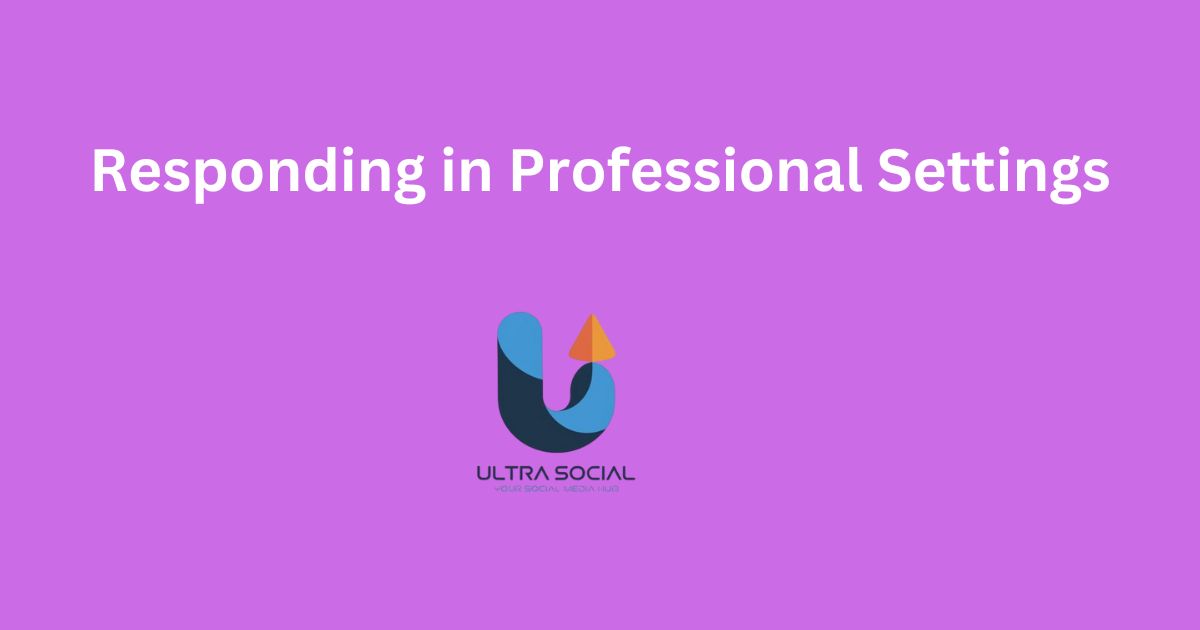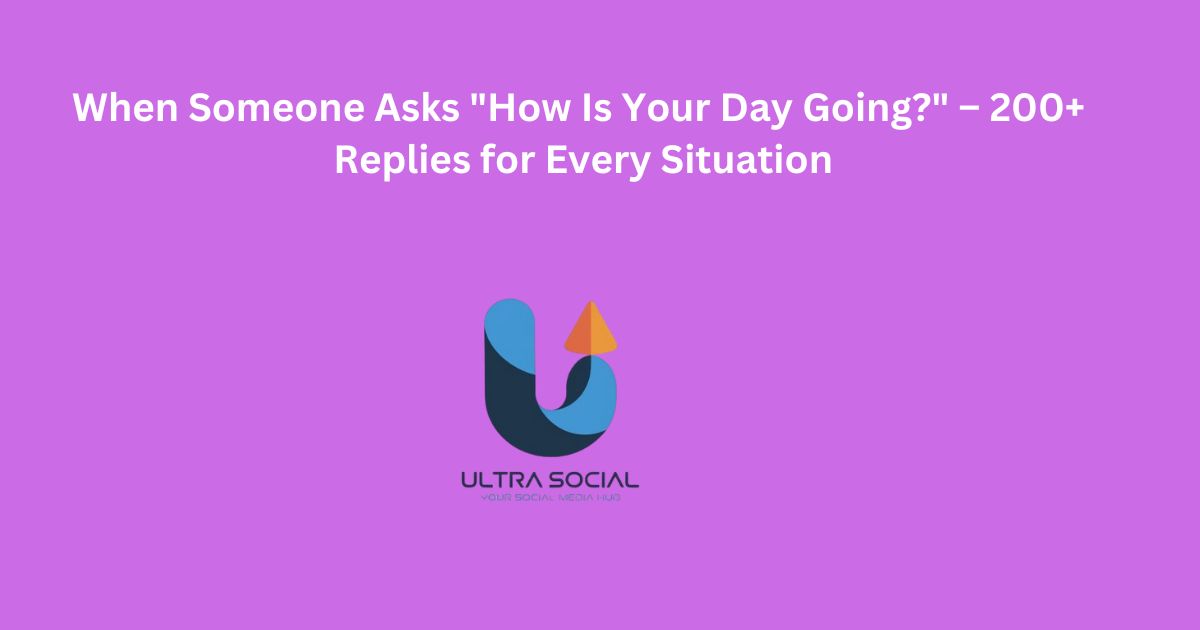Small talk is a staple of daily communication, whether it’s at work, at a party, or during a casual encounter. One of the most common conversation starters is the question, “How is your day going?” On the surface, it seems like an innocent question, but the response you give can set the tone for the entire interaction.
Are you looking for ways to switch up your responses to “How is your day going?” or better understand the power behind your reply? This comprehensive guide covers the psychology of this simple question, over 200 unique replies for every type of day, and insights into tailoring your response for different situations.
Whether you’re navigating social etiquette, trying to build connections, or simply finding ways to respond with authenticity, you’ll learn how to engage in meaningful conversations and keep interactions flowing naturally.
The Psychology Behind “How Is Your Day Going?”

On the surface, “How is your day going?” may seem like a polite greeting, but there is more depth to this common question. Asking about someone’s day is a form of social interaction that serves as an entry point into deeper conversation. Psychologists argue that such questions tap into a need for connection, emotional sharing, and mutual support.
YOU CAN ALSO READ ABOUT:
Why People Ask
People ask “How is your day going?” for several reasons:
- Politeness and Social Etiquette: It’s often used as a safe conversation starter.
- Genuine Curiosity: Sometimes, the person is truly interested in how you’re feeling.
- Emotional Check-In: A way to gauge someone’s mood or well-being.
The nature of this question often leads to positive interactions, or at the very least, keeps the conversation neutral.
Emotional Impact of the Question
Responding to “How is your day going?” can affect how we feel:
- Positive responses uplift mood and contribute to a positive mood enhancement.
- Negative responses can lead to empathy and emotional support from the person asking.
- Detailed responses can deepen the conversation, fostering emotional intelligence and connection.
200+ Replies to “How Is Your Day Going?”
The beauty of this question lies in its versatility. Your reply can be tailored based on your mood, situation, and the relationship you have with the person asking. Here’s a categorized list of 200+ replies to keep in your conversational toolbox.
Positive Responses
When your day is going well, it feels great to share that positivity.
- “It’s going fantastic, thanks!”
- “Couldn’t be better!”
- “I’m having a really productive day!”
- “Feeling grateful, everything’s on track.”
Neutral Responses
Sometimes, you’re having a day that’s neither good nor bad—just average.
- “It’s alright, pretty standard.”
- “Same old, same old.”
- “Nothing too exciting, just cruising.”
- “It’s going okay, how about you?”
Negative Responses
When you’re not having the best day, it’s okay to be honest.
- “Not the best, but I’m hanging in there.”
- “It’s been a rough one, but I’ll get through it.”
- “A bit stressful, but nothing I can’t handle.”
- “Honestly, I’m feeling pretty tired today.”
Humorous Responses
Humor can lighten up any situation, making your response memorable.
- “Living the dream, just not sure whose dream it is!”
- “Trying to keep it together with coffee and optimism!”
- “If by ‘great’ you mean chaotic, then yes!”
- “Surviving on caffeine and sheer determination!”
Creative Responses
Unique answers are perfect for making your reply stand out.
- “Like a caffeinated squirrel on a mission!”
- “It’s going at the speed of light and sound.”
- “I’m channeling my inner superhero today!”
- “It’s a masterpiece in progress.”
Busy Responses
When you’re juggling tasks, a busy response can reflect that hustle.
- “It’s a busy one, but I’m making it work!”
- “Non-stop, but in a good way!”
- “Juggling a million things, but staying afloat.”
- “Busy but productive, can’t complain.”
Relaxed Responses
If you’re having a laid-back day, your answer can reflect that calm.
- “Super chill, just taking it easy.”
- “Relaxing and enjoying every moment.”
- “It’s been smooth sailing today!”
- “Very peaceful, just what I needed.”
Reflective Responses
When you’re feeling introspective, share your thoughts with a reflective response.
- “I’ve been thinking a lot today, it’s been eye-opening.”
- “It’s a day of reflection and growth.”
- “I’ve had a lot on my mind, but it’s been insightful.”
- “It’s been a day for quiet contemplation.”
Inquisitive Responses
Turn the conversation back around with a curious reply.
- “How’s yours? I’m genuinely interested.”
- “I’m curious about your day—how’s it going?”
- “Mine’s going well, but how are you doing?”
- “I’d love to hear about your day!”
Common Responses
There are some standard responses to “How is your day going?” that fit almost any situation.
- “Good, thanks for asking!”
- “It’s going well, how about yours?”
- “Not bad at all, what about you?”
- “It’s been fine, thanks!”
Tailoring Responses for Different Settings
While your mood impacts how you respond, the setting is equally important. Whether you’re at work, with friends, or in a multicultural environment, adapting your reply can enhance the conversation.
Responding in Professional Settings

“How is your day going?” in professional settings requires a balance between sharing personal details and maintaining professionalism. Whether you’re responding to a colleague, boss, or client, consider these professional communication tips:
Professional Responses
- “It’s been a productive day, thanks for asking.”
- “Busy, but handling everything well.”
- “Everything’s going smoothly so far!”
Professional settings often demand a level of formality, but don’t be afraid to let some personality shine through. A positive response in the workplace can contribute to relationship building with colleagues and supervisors.
Workplace Interactions: Assessing the Situation
When responding at work, it’s important to assess the situation:
- Are you in a meeting? Keep it concise.
- Is it a one-on-one with a colleague? You can be more personal.
Cultural Differences in Responding to “How Is Your Day Going?”
Global communication can bring different expectations and norms when it comes to casual greetings. Understanding these cultural differences can help you navigate social interactions more effectively.
Western Norms
In Western cultures, short, polite responses are the norm:
- “Good, thanks!”
- “Not bad at all.”
Eastern Norms
In some Eastern cultures, humility and modesty are valued in responses:
- “I’m doing okay, thank you for asking.”
- “It’s been an ordinary day, how about you?”
Navigating Multicultural Interactions
When engaging in multicultural interactions, it’s important to:
- Be aware of the context.
- Use open body language and maintain eye contact.
- Respect cultural norms by adjusting your response style accordingly.
The Power of a Thoughtful Response
A thoughtful response can transform a simple question into an opportunity for emotional sharing and deeper connection. Whether it’s a friend checking in or a stranger at a party, how you answer can open the door to more engaging, constructive dialogue.
Emotional Intelligence and Communication Skills
Using your communication skills effectively can lead to more positive interactions. A thoughtful response shows that you’re actively engaging in the conversation, making it more personal and meaningful.
- Honest answer: Share your true feelings when appropriate.
- Building rapport: Create stronger bonds by being open and genuine.
- Positive mood enhancement: Turn a neutral conversation into something uplifting with a positive reply.
Body Language and Tone: Nonverbal Communication
Your nonverbal cues—including body language and tone—play a significant role in how your response is perceived. Maintaining open body language and an inviting tone can enhance the authenticity of your words.
Key Nonverbal Cues
- Eye contact: Establishes trust and shows attentiveness.
- Open posture: Signals openness and confidence.
- Vocal tone: A calm and steady tone conveys sincerity.
Matching Tone with Response
When giving a calm response, your tone should reflect that same sense of peace. Likewise, an excited response should sound enthusiastic. Ensure that your nonverbal cues align with the words you’re speaking for authenticity in responses.
When “How Is Your Day Going?” Becomes More Than Just a Question
Sometimes, “How is your day going?“ is more than a polite question—it can signal deeper emotional concerns. If someone asks you with noticeable sincerity, it’s important to assess the situation and respond appropriately.
Offering Support When Needed
If you sense that the person is looking for emotional support:
- “It sounds like you’ve had a rough day. Want to talk about it?”
- “I’m here if you need someone to listen.”
Offering support can help the other person open up and share what they’re really going through.
Recognizing Emotional Sharing
Be attentive to when someone is looking to share more than a surface-level response. Strengthening relationships often starts with recognizing when it’s time for deeper conversation.
Conclusion
“How is your day going?” may seem like a simple question, but it holds the potential for meaningful connections. It’s more than just a greeting—it’s an opportunity to engage, share, and understand. By responding thoughtfully, considering context, and using appropriate body language, we can turn casual interactions into deeper, more authentic exchanges. Whether you’re replying with positivity, honesty, or humor, the key is to be genuine and attentive. This question can bridge gaps, foster relationships, and enhance communication skills, making each encounter a chance to connect on a deeper level. So, next time, respond with intention and care.

As a seasoned content writer with five years of experience, I specialize in crafting engaging and SEO-friendly website content that resonates with audiences. My passion lies in transforming complex ideas into clear, compelling narratives that drive traffic and conversions. With a keen eye for detail and a deep understanding of digital marketing, I help brands tell their stories effectively. Whether it’s blog posts, web copy, or social media content, I strive to deliver quality that captivates readers and enhances online presence.







